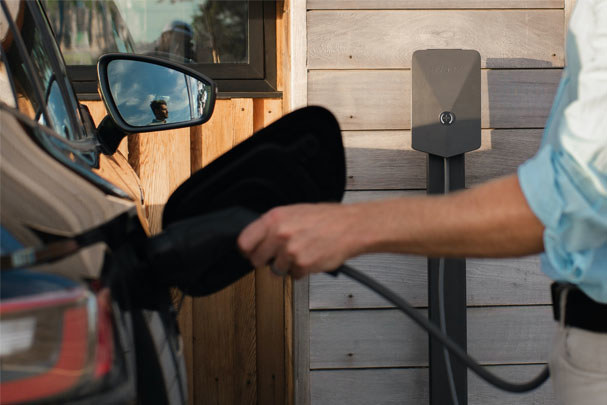
Nationwide Vehicle Contracts addresses range anxiety by offering practical advice on managing and overcoming it during longer journeys.
You've packed all your bags, got your packed lunch sorted, and then you realise your electric car might not have enough range to reach your destination. Not a great start!
This is known as range anxiety, which is the fear that your EV won't have enough battery to reach its destination, leaving you stranded.
To stop this from ever happening, this blog post offers valuable insights into planning, charging, and driving techniques specific to the UK so you don't have to worry about range anxiety in your electric lease car.
Introduction to Range Anxiety
Range anxiety is the concern that your EV won't be able to travel the distance required on a single battery charge, especially when travelling on longer journeys.
With the huge increase of EVs in the UK, range anxiety is becoming an increasingly common issue. It's causing EV owners to drive less or avoid long-distance journeys altogether, limiting the vehicle's usefulness and saving potential.
Planning Your Long Drive
Route planning is an essential aspect of avoiding range anxiety. It involves carefully selecting the most efficient and convenient path to reach your destination while also considering your EV's range limitations and the availability of charging stations.
Here are the benefits of planning your route:
- Optimise efficiency - Route planning allows you to choose the most energy-efficient path, minimise detours, and avoid traffic.
- Predictable charging stops - With a well-planned route, you can determine when you'll need to charge your EV.
- Reduce stress - Knowing you've got a reliable, well-thought-out route will help reduce stress when driving and make for a more enjoyable experience on your journey.
In the UK, there are several tools you can use to help choose the most EV-friendly routes. ZapMap is a platform that provides comprehensive information on charging infrastructure and also offers route-planning features.
You must use tools like ZapMap to know the locations of charging stations along your route to help counter-range anxiety.
Charging Strategies
In the UK, there are several types of charging stations for EVs, each with varying speeds and tools. Before your journey, ensure you use your home charger (if you have one) to charge your EV to as full as possible. If you can't do it overnight, plug in your car as soon as you wake up to maximise charge.
Once on the road, there are various public charging facilities, such as:
- Slow Chargers (AC) - Providing speeds similar to home chargers, these are found in urban areas like car parks and shopping centres.
- Fast Chargers (AC/DC) - Fast chargers offer a significant boost in charging speed and deliver up to 60 - 80 miles of range an hour. They're common in public charging networks and are great for long journeys.
- Rapid Chargers (DC) - Rapid chargers are what you want to look out for. They're the fastest public charging option, providing 100 - 150 miles of range in around 30 minutes. They're typically found along motorways.
The charger you choose depends on your EV charging capacities. Most modern EVs have rapid charging facilities, but it's worth double-checking before your journey to ensure.
You'll need to optimise your charging stops during a long journey to save as much time as possible. Here's some tips:
- Plan ahead - Use tools like ZapMap to identify charging stations along your route.
- Prioritise rapid chargers - When planning your route, look for stations with rapid chargers, which will significantly reduce charging time.
- Charge to 80% - It's more time-efficient to charge your EV to around 80% than full capacity.
- Consider off-peak times - The last thing you want is to arrive at a charging station, and there's a big queue. Avoid this by travelling during off-peak times.
Driving Techniques
An electric car's range is like a countdown; you can see the miles ticking away and know that you're on borrowed time. To make your EV as efficient as possible, there's a few handy driving habits to maximise range:
- Smooth acceleration and braking - Avoid rapid acceleration and harsh braking as they waste energy.
- Maintain a constant speed - Use cruise control when appropriate to keep a constant speed, which minimises energy consumption.
- Precondition your EV - Use climate control when your EV is charging, as using it while driving drains the battery.
- Regenerative braking - Many EVs feature regenerative braking, which converts kinetic energy back into electrical energy to recharge the battery. Some EVs allow you to adjust the level of regenerative braking, so experiment and find the one that best suits your driving style.
You can also adjust your driving style for certain conditions to maximise range:
- In rain and snow, drive more cautiously and avoid sudden movements.
- On hills and inclines, gradually accelerate before the hill and use regenerative braking on the descent to recover energy.
- In strong headwinds, reduce speed and use eco-driving modes if available.
- In extremely hot or cold temperatures, precondition your EV for a comfortable cabin temperature, as using climate control while driving drains the battery.
For more information on driving in adverse weather, check out our guide How to Drive in Extreme Weather.
Using Public Charging Infrastructure
Finding
To help plan your route, you can find charging stations through platforms such as ZapMap and PlugShare, which use real-time data on station availability, charging speeds, and user reviews.
You can also use your in-car navigation systems or your mobile phone through apps such as Google Maps or Apple Maps.
Using
Once you arrive at the charging station, park in the spot and connect to the charging point using the appropriate connector.
To initiate charging, you'll need to authenticate yourself as a user. This can be done in several ways:
- RFID cards - Some networks issue RFID cars that allow you to tap on the station to start charging.
- Mobile apps - Many stations allow you to start charging via mobile apps. Simply scan the QR code or use the app to activate the station.
- Contactless payment - Some stations accept contactless payment methods like debit or credit cards for access without needing an RFID card or mobile app.
Paying
Paying for charging is pretty similar to using. You typically need an RFID card or mobile app which stores your payment information and allows you to start and stop sessions.
Most stations also accept credit and debit cards that are linked to your account.
The price you'll pay varies depending on the provider and type of charge. Typically, the faster the charger, the more you'll pay.
Emergency Measures
Worse comes to worse, and you've run out of charge on the road! Don't panic; there are loads of things you can do in this situation:
- Pull over - First, pull over safely to a secure location, such as a car park or rest area.
- Contact roadside assistance - Most EV manufacturers offer specialised roadside assistance services that you can use. Someone will come and pick you up and take you to the nearest EV charging station.
- Plan for alternative charging - If roadside assistance isn't available, research the nearest charging station and consider walking or arranging transportation to the nearest station. Only do this if you feel safe and know the local area.
- Carry emergency charging equipment - Some EVs have emergency charging cables or portable Level 1 chargers that can be plugged into a standard electrical outlet.
Running out of range is extremely stressful, but you must remember to ensure you and your passengers are safe. Use hazard lights to make your vehicle visible, stay inside the car with the doors locked, and keep essentials like water and food on board.
Finally, make sure you learn from your mistakes. As always, practice makes perfect, so if you're fairly new to driving an EV, you're not going to master it straight away. Use the situation to evaluate where you went wrong and come up with strategies on how to avoid it in the future.
Conclusion
Range anxiety is something all EV drivers experience, but once you've mastered how to overcome it, you'll never look back.
Remember to fully charge your EV before you set off, plan your route to coincide with good charging infrastructure, and drive efficiently.
Once these things become inherent on your long journeys, you'll truly start to enjoy the benefits of driving an electric vehicle. After all, they're the future of motoring, so get ahead of the curve and overcome range anxiety sooner rather than later.
Looking for more electric vehicle information? Nationwide Vehicle Contracts produces a range of content on all things electric, such as Electric and Hybrid car leasing guides and Green Motoring blogs.
We are also one of the UK's largest car leasing brokers, offering a range of electric lease deals to suit your every need. For more information, call one of our experts on 0345 811 9595.
Originally posted: 27th September 2023

